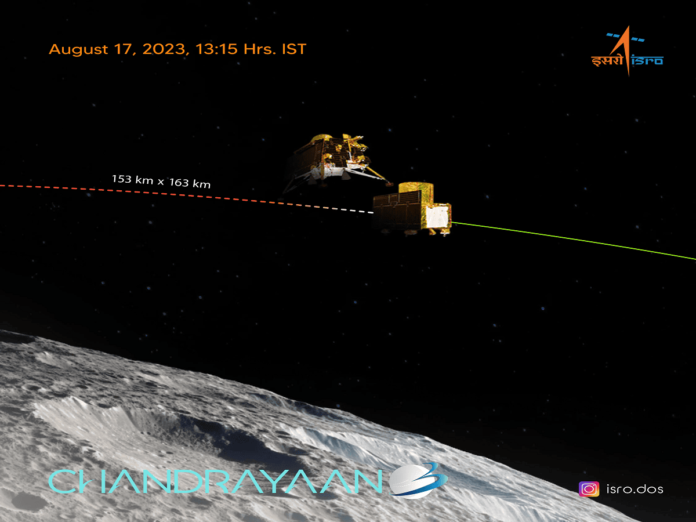In a historic moment, the Indian Space Agency ISRO’s CHANDRAYAN-3 made a soft landing on the south pole of the moon on 23rd August. With this achievement, India became the fourth country in the world whose spacecraft landed on the surface of the Moon and the first country to do a soft landing on the Lunar South Pole.
Before India only Russia in 1959(Luna-2), the United States in 1969(Appolo-11) which put Neil Armstrong on the moon, and China in 2013 (Change’e-4) was able to land their spacecraft on the moon and now India in 2023 became the fourth country to do so. Indian space agency ISRO ( Indian Space Research Organisation) is getting applause from all over the world including the American space agency NASA for this achievement.
On 23 August 2023 At 12.32UTC (i.e. 6.03 PM Indian standard time), 40 days after it took off from ISRO’s Satish Dhawan Space Centre, Shreeharikota, Andhra Pradesh, India on 14 July 023 at 09.05.17 UTC ( i.e. 2.35 PM Indian standard time) the soft landing took place uneventfully.
The VIKRAM (named after the founder of the Indian Space Program Vikram Sarabhai) Lander separated from the Chandrayan -3 spacecraft in lunar orbit and finally landed softly on the south pole of the moon. Soft landing on the South Pole is one of the important achievements in the history of aerospace exploration as no one has succeeded yet in achieving this. Before scientists used to think that it was next to impossible to land on the South Pole as it had several hurdles to do so such as rocky and uneven terrain, lack of proper visibility, inability to maintain communication in the last stage of landing with Lander, and so on.
Vikram Lander ways around 1700kg (or 3747.86 lb) and is 2-meter-tall while PPRAGYAN Rover is a lunar rover that is present inside the Lander which eventually comes out and helps in doing further research ways 26 Kg (or 60 lb).
All the systems will operate on solar-powered panels and will be active for 14 Earth days (or one Lunar day) under normal circumstances.
Both Lander and Rover are fitted with proper instruments to carry out multiple tests to find out the source of water on the south pole, the quantity and variety of different elements on the moon’s surface, the possibility of future lunar human colonization, Surface temperature, Gas and plasma environment on the moon. The Propulsion Module will keep orbiting around the moon 100km above the moon’s surface and help as a relay satellite for VIKRAM Lander to transmit the collected data to Earth. The propulsion Module will also help in research by observing the Earth from the moon’s orbit.
The South Pole is thought to be the huge storage of iced water on the moon. When discovered it can be used as the source of water for our astronauts and a fuel source for spacecraft.
Chandrayan-3 is the third Lunar Mission of India from the Chandrayan (means Moon Vehicle) Program, it was follow on mission to Chandrayan-2. The first two attempts Chandrayan-1 (2008) and Chandrayan-2 (2019) failed eventually. Chandrayan-1 was a Lunar Impact Prob and Pilot Project but Chandrayan-2 was a fully flagged Lunar Mission that was almost successful but failed in the last stage due to the crash of Its Lander while soft landing. But these two previous missions helped in the success of Chandrayan-3.
India’s Chandrayan-3 was not the only moon mission that was carried out this year. After 47 years Russia Sent its Spacecraft LUNA-25 a few days after India’s launch but it crashed prematurely before making a soft landing on the Lunar surface. A privately owned Japanese aerospace startup company Ispace Inc. also made a failed attempt to land on the moon. It failed due to they lost contact with their lander named Hakuto-R Mission or M1.
Indian Prime Minister Narendra Modi conveyed his best wishes to ISRO chief S. Somnath and all the scientists and engineers involved in the Chandrayan-3 Mission for a successful landing.
ISRO’s next space project ADITYA L-1 for the solar mission was successfully launched on 02 September 2023. It will not land on the sun rather it is meant to observe the external corona of the sun’s surface from a distance.
